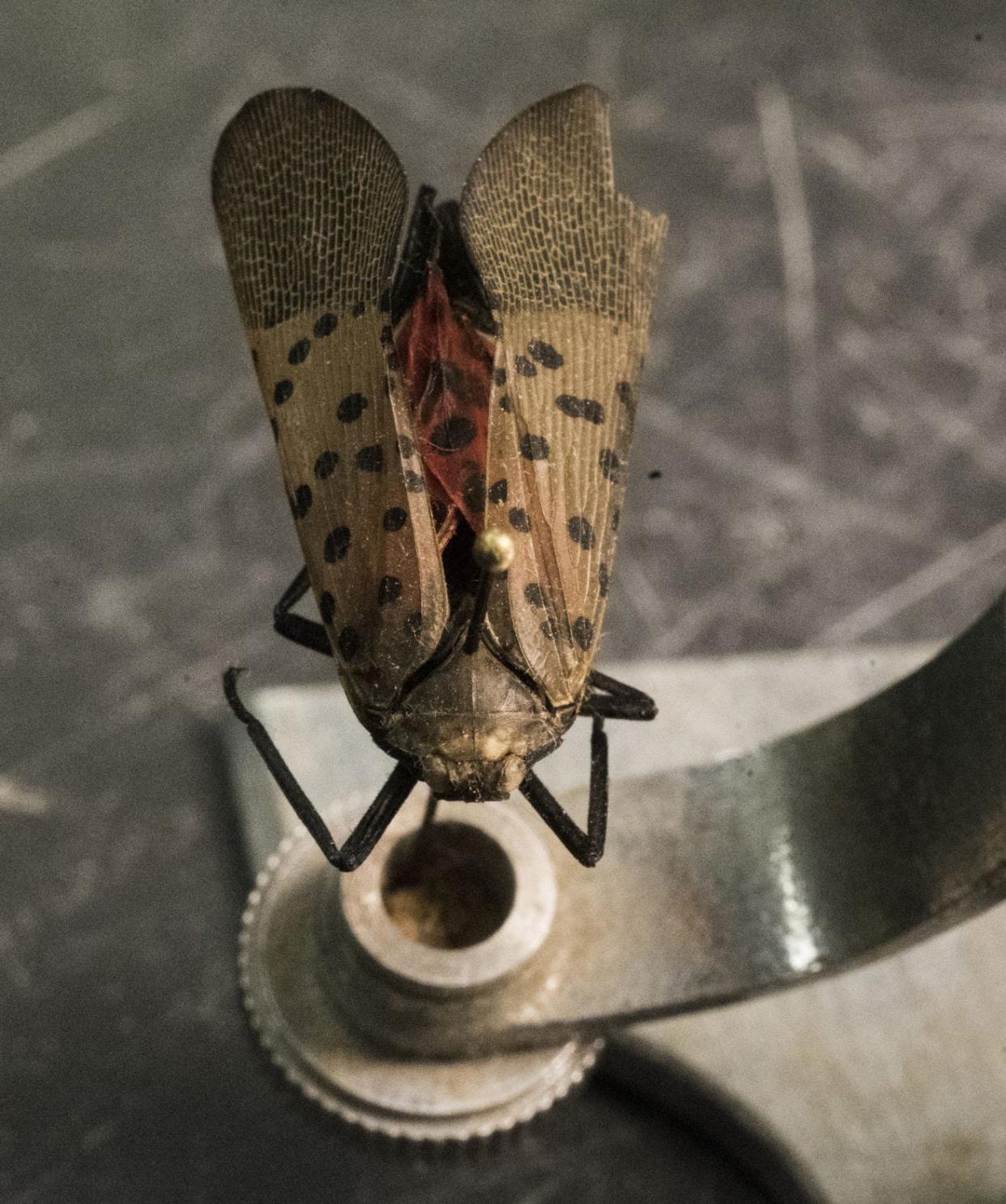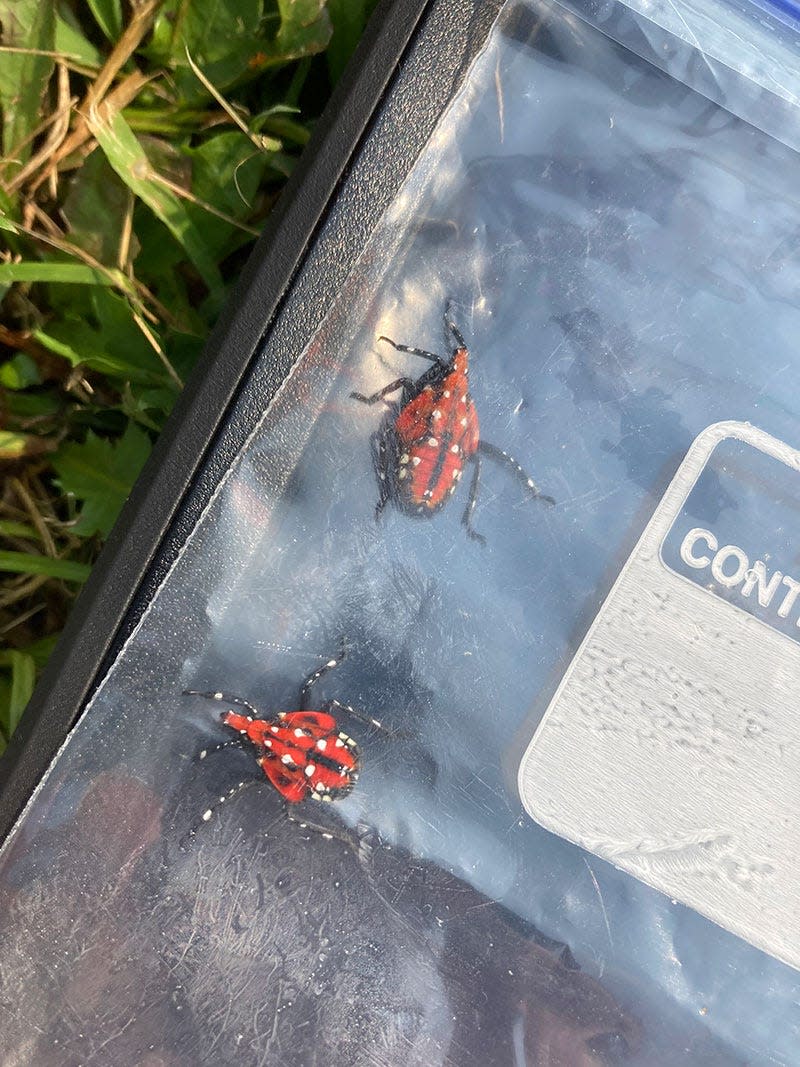Dreaded lanternfly spotted in Elkhart and Mishawaka likely got here via rail

An invasive moth-like insect that’s considered a threat to fruit orchards and nurseries as well as the logging and wine industries has been spotted in the Michiana area.
The spotted lanternfly, which officials say could cause millions of dollars in damages if left unchecked, has been found in Elkhart, Mishawaka and Chesterton next to railroad lines moving through those cities, according to the Indiana Department of Natural Resources.
It’s the third region of the state where the invasive pest has been found.
Bug watch: Spotted lanternfly, a new invasive pest, aims to consume our grapes, hops and fruit trees
The lanternfly was discovered in Switzerland County in the southeast portion of the state in 2021 and in Huntington County in the northeast in 2022. It’s also been located at a parcel of property in Pontiac, Mich.
The DNR said it is surveying those areas to determine the extent of the infestation. The site in Michigan is being contained by a team of specialists, according to the Michigan Invasive Species program.

Originating in Asia, the insect was first discovered in Pennsylvania in 2014 and is often unknowingly spread by humans. It’s now found in many eastern states as well as along the rail lines in Cincinnati, Columbus, Cleveland and Toledo in Ohio, and in Chicago, according to the DNR.
Natural resource officials in both states have been diligent about warning about the insects for the past several years because they can cause millions of dollars in damage. Management includes treatment and/or removal of invasive tree of heaven ― spotted lanternfly’s preferred host ― and regular surveying and monitoring of the insect population.
Canine investigators: Dogs are scent-trained to seek out invasive Spotted Lanternfly eggs
The adult insects have piercing, sucking mouthparts and weaken plants by feeding on them, making it difficult for the plant to survive the winter. Congregating spotted lanternfly insects produce large quantities of honeydew that over time become infested with sooty mold that attracts other pests in the area, further threatening native plants.
About an inch long, adult lanternflies have a somewhat exotic look with gray outer wings with dark spots and splashy hind wings that are red, white and black. It’s a bug that stands out for its size and appearance.
Nymphs are no longer than a half inch and are most visible May through September. They are wingless and beetle-like, first appearing black with white spots and developing red patches as they mature.
Egg masses resemble old chewing gum, with a gray, waxy, putty-like coating. Hatched eggs appear as brownish, seed-like deposits. They are most visible September through May, according to the Michigan Invasive Species Program.
Those spotting the lanternfly in Michigan are asked to take a picture, squish it and report it via its Eyes in the Field online form.
In Indiana, anyone who spots this insect or signs of it should contact the Indiana DNR Division of Entomology & Plant Pathology by calling 866-663-9684 or emailing DEPP@dnr.IN.gov.
Email Tribune staff writer Ed Semmler at esemmler@sbtinfo.com.
This article originally appeared on South Bend Tribune: Destructive lanternfly found in Mishawaka and Elkhart by railroad line

